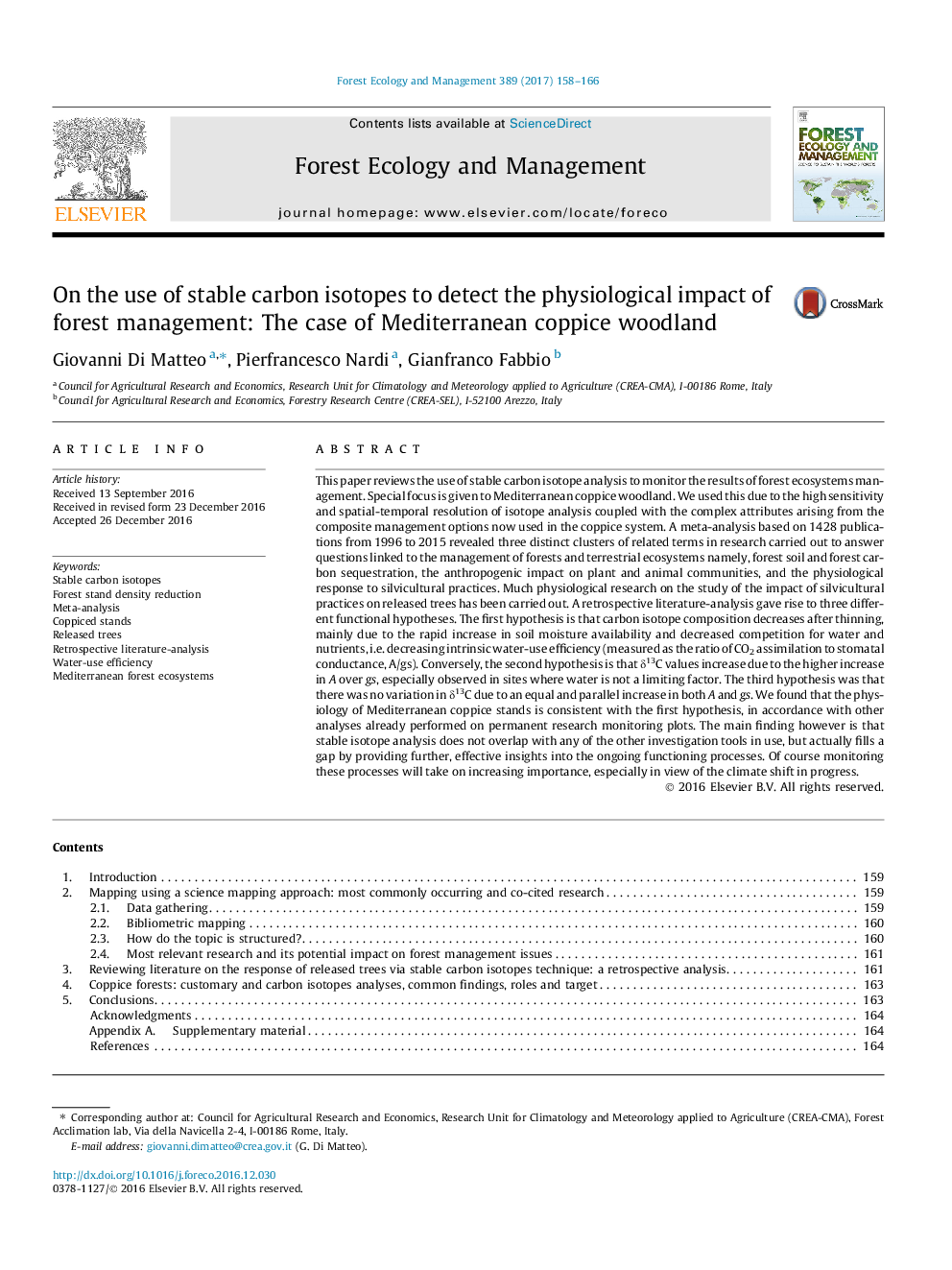| Article ID | Journal | Published Year | Pages | File Type |
|---|---|---|---|---|
| 4759483 | Forest Ecology and Management | 2017 | 9 Pages |
Abstract
This paper reviews the use of stable carbon isotope analysis to monitor the results of forest ecosystems management. Special focus is given to Mediterranean coppice woodland. We used this due to the high sensitivity and spatial-temporal resolution of isotope analysis coupled with the complex attributes arising from the composite management options now used in the coppice system. A meta-analysis based on 1428 publications from 1996 to 2015 revealed three distinct clusters of related terms in research carried out to answer questions linked to the management of forests and terrestrial ecosystems namely, forest soil and forest carbon sequestration, the anthropogenic impact on plant and animal communities, and the physiological response to silvicultural practices. Much physiological research on the study of the impact of silvicultural practices on released trees has been carried out. A retrospective literature-analysis gave rise to three different functional hypotheses. The first hypothesis is that carbon isotope composition decreases after thinning, mainly due to the rapid increase in soil moisture availability and decreased competition for water and nutrients, i.e. decreasing intrinsic water-use efficiency (measured as the ratio of CO2 assimilation to stomatal conductance, A/gs). Conversely, the second hypothesis is that δ13C values increase due to the higher increase in A over gs, especially observed in sites where water is not a limiting factor. The third hypothesis was that there was no variation in δ13C due to an equal and parallel increase in both A and gs. We found that the physiology of Mediterranean coppice stands is consistent with the first hypothesis, in accordance with other analyses already performed on permanent research monitoring plots. The main finding however is that stable isotope analysis does not overlap with any of the other investigation tools in use, but actually fills a gap by providing further, effective insights into the ongoing functioning processes. Of course monitoring these processes will take on increasing importance, especially in view of the climate shift in progress.
Related Topics
Life Sciences
Agricultural and Biological Sciences
Ecology, Evolution, Behavior and Systematics
Authors
Giovanni Di Matteo, Pierfrancesco Nardi, Gianfranco Fabbio,
